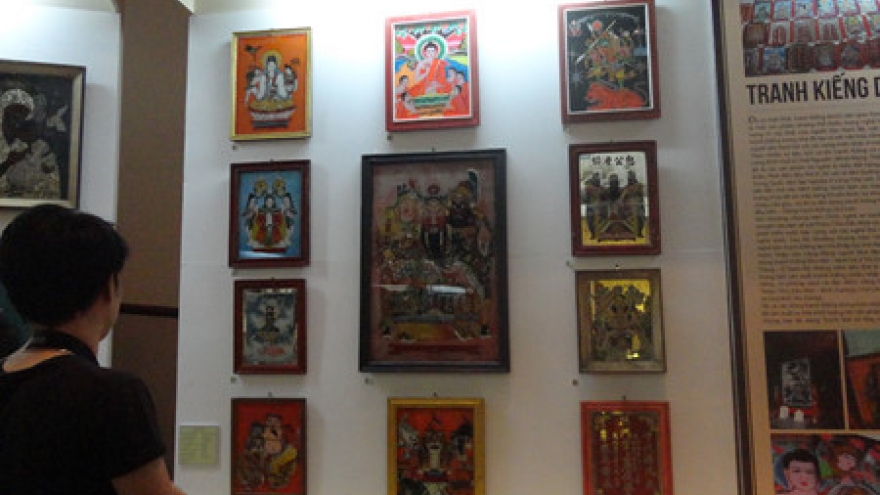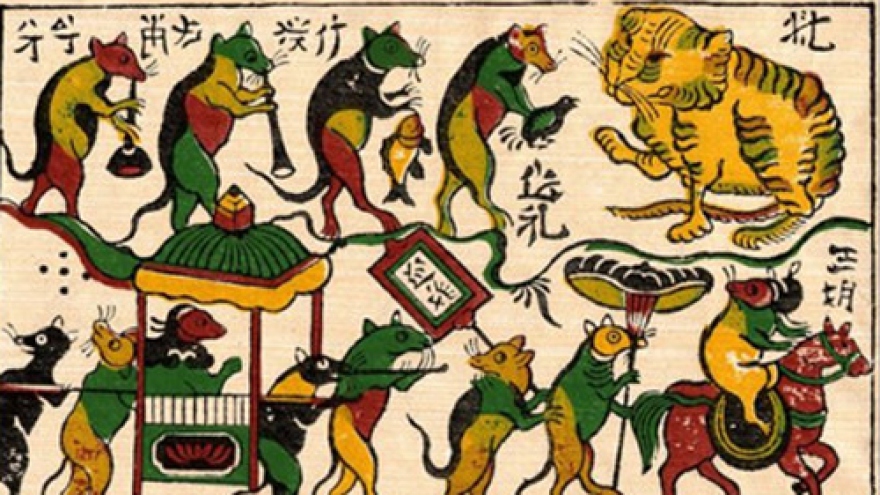Folk paintings of Sinh village
VOV.VN - If Hanoi is famous for Hang Trong folk paintings and the northern delta has Dong Ho paintings, the central province of Thua Thien Hue boasts paintings of Sinh village.
 |
| Sinh village paintings (Photo by Le Huy Hoang Hai/vov.vn) |
The woodblock printed paintings have been associated the spiritual life of locals for generations.
Sinh or Lai An village is located in Phu Vang district, 9km east of Hue city. If Dong Ho folk paintings reflect the down-to-earth daily life of northern delta residents, Sinh village paintings are used for belief and worship purposes.
Animals are those of the 12 zodiac representing the ages of the owners and buffaloes, cows, pigs, and horses which are believed to protect the raised cattle from illness. Paintings of tigers and elephants are worshipped in the shrines to pray for protection of human being.
 |
Sinh village paintings are similar to others in terms of techniques and materials. Patterns are printed onto Do paper from woodblocks and color. The color ink is made from natural materials. The paintings are drawn with brushes made from the roots of pineapple trees.
Artisan Nguyen Huu Phuoc said “The most difficult step is to create colors. Sinh village paintings are characterized by 5 colors which should be painted separately. When one color is dried, it’s time to add another color. The other 2 steps are to trim paper and print painting. So after a total of 7 steps are taken, the painting is finished.”



